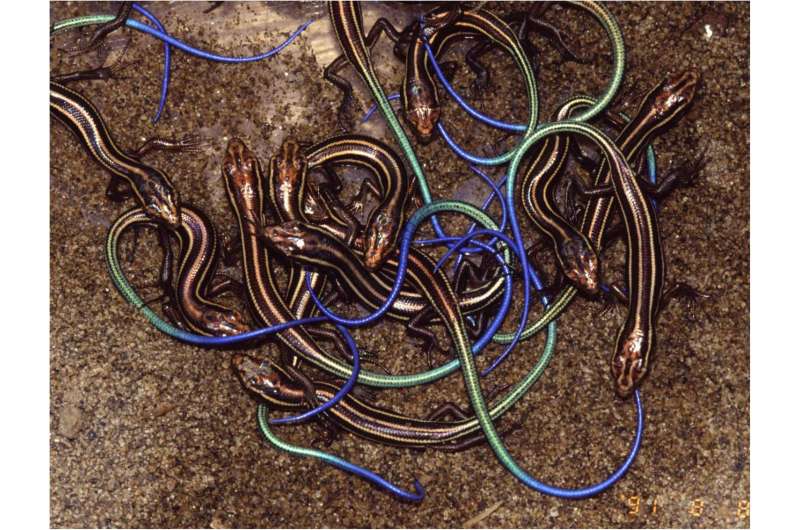Lizard tail adaptations may reflect predators' color vision capabilities

Juveniles of numerous lizard species have a vividly blue-colored tail that likely serves to deflect predator attacks toward the detachable tail rather than the lizard's body. Now researchers have found that certain differences in blue and UV light reflectance in lizard tails are likely adaptations to predators with different color vision capabilities.
Lizard tails with vivid blue reflectance evolved in communities with either weasel or snake predators, which can both detect blue wavelengths. However, lizard tail UV reflectance was much higher in populations with only snake predators, perhaps because snakes can detect UV, yet weasels cannot. Finally, a cryptic brown tail evolved on islands where birds are the primary lizard predator. Because birds have keen visual acuity, a brown, camouflaged tail may be more advantageous.
"Nano-particle pigments in skin produce the anti-predator tail coloration," explained Dr. Takeo Kuriyama, lead author of the Journal of Zoology study.
More information: T. Kuriyama et al, Cellular basis of anti-predator adaptation in a lizard with autotomizable blue tail against specific predators with different colour vision, Journal of Zoology (2016). DOI: 10.1111/jzo.12361
Journal information: Journal of Zoology
Provided by Wiley



















